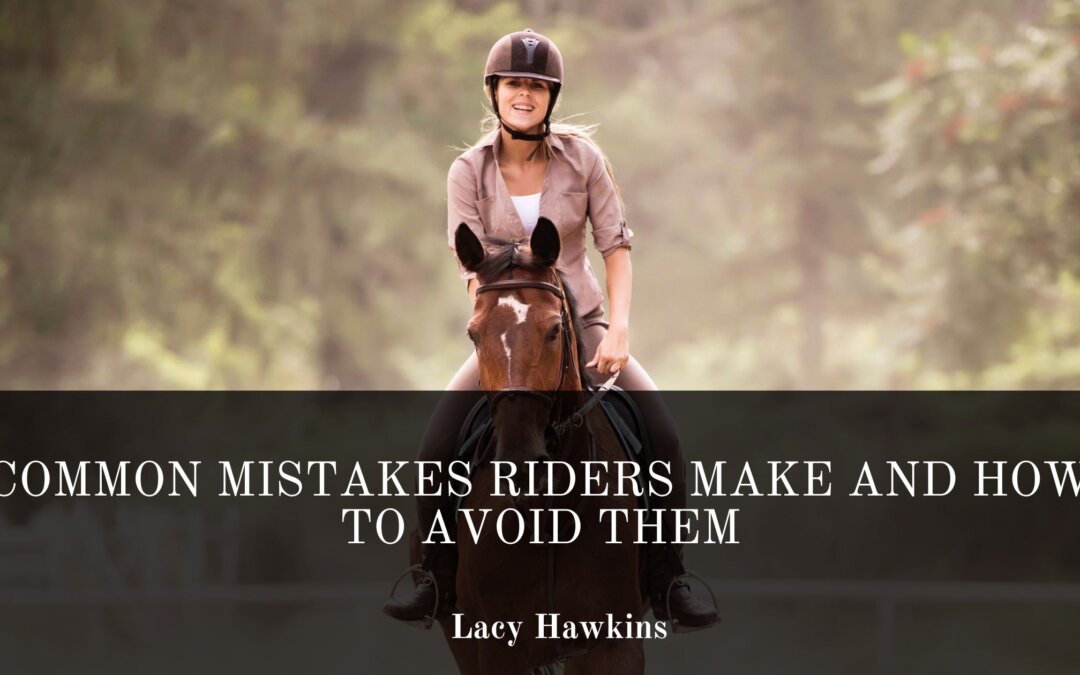Horseback riding is an exhilarating and rewarding activity, but it comes with its own set of challenges. Even experienced riders can fall into bad habits or make mistakes that can hinder their progress or put them and their horses at risk. Here’s a rundown of common mistakes horseback riders make and how to avoid them.
Poor Posture
Mistake: Many riders, especially beginners, struggle with maintaining proper posture. Slouching, leaning too far forward or backward, or gripping the reins too tightly can throw off the rider’s balance and confuse the horse.
How to Avoid: Focus on sitting tall in the saddle with your shoulders back and your eyes looking forward. Imagine a straight line running from your ear through your shoulder, hip, and heel. Regularly practice exercises to strengthen your core, which is essential for maintaining proper posture while riding.
Heavy Hands
Mistake: Riders often rely too much on the reins to control the horse, leading to heavy-handedness. This can cause discomfort for the horse, leading to resistance, head tossing, or even anxiety.
How to Avoid: Develop a soft, steady hand by using your seat and legs to communicate with your horse more effectively. Practice riding with minimal rein contact and work on transitions using your body weight and leg pressure instead of relying solely on the reins.
Incorrect Leg Position
Mistake: A common error is having the legs too far forward or too far back, which affects your balance and the horse’s ability to respond to your cues.
How to Avoid: Keep your legs relaxed and in close contact with the horse’s sides. Your feet should be under your hips, with your heels down and your toes pointing slightly forward. Regularly check your leg position during your ride and adjust as needed.
Overusing Aids
Mistake: Overusing aids like kicking, pulling on the reins, or excessively using spurs can desensitize the horse, making it less responsive to your commands over time.
How to Avoid: Use your aids sparingly and with intention. Practice using lighter cues, and reward your horse with a release of pressure when it responds correctly. This positive reinforcement will encourage more responsiveness without overwhelming the horse.
Ignoring the Horse’s Signals
Mistake: Horses communicate through their body language, and ignoring these signals can lead to misunderstandings, frustration, or even dangerous situations.
How to Avoid: Pay close attention to your horse’s ears, eyes, and body movements. Signs of discomfort or stress, such as pinned ears, tail swishing, or stiffness, should not be ignored. Take time to understand your horse’s signals and adjust your riding or training accordingly.
Skipping Warm-Up and Cool-Down
Mistake: Skipping or rushing through warm-up and cool-down sessions can lead to injuries for both the rider and the horse.
How to Avoid: Always start with a proper warm-up to prepare the horse’s muscles and joints for more intense activity. Similarly, end each ride with a cool-down period to gradually bring your horse’s heart rate back to normal and prevent stiffness.
By being mindful of these common mistakes and taking steps to avoid them, you can improve your riding skills, ensure your horse’s well-being, and enjoy a more harmonious and rewarding riding experience. Remember, horseback riding is a partnership between you and your horse—clear communication and mutual respect are key to success.
